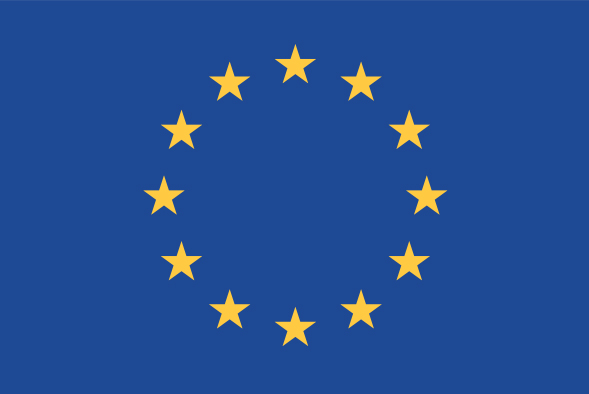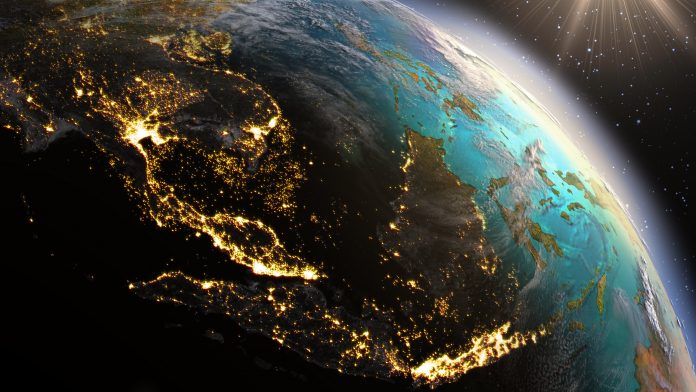We spoke with Professor Colin Jones, project coordinator of CRESCENDO, about the project’s work in predicting global climate change over the coming century
CRESCENDO is a European Union Horizon 2020 €15 million project that brings together seven European Earth System Modelling teams, along with experts in developing “scenarios” of future emissions of greenhouse gases and land-use change. Using these emission scenarios in the project Earth System Models (ESMs) allows the team to make predictions of how climate will change over the coming century depending on which scenario is followed.
What are the aims of the CRESCENDO project?
One of the main aims of CRESCENDO is to improve the realism of the seven Earth System Models, by introducing new processes and process couplings that are important for simulating how the global climate system may change in the future.
CRESCENDO was framed around the Sixth Coupled Model Intercomparison Project, (CMIP6), sponsored by the World Climate Research Program (WCRP). CMIP6 brings together ESM teams from across the world, who use the same emission scenarios as in CRESCENDO to also predict the evolution of the climate over the coming century. The emission scenarios span a range of plausible futures; from an optimistic green future, with low greenhouse gas emissions to a pessimistic future with intense fossil fuel use. Results from all these predictions are then made available, in a single format, to researchers anywhere in the world.
As well as improving our models and contributing data to CMIP6, an equally important aim of the project is to better understand how the climate system works and identify key sensitivities for future change. To achieve this, we spend a lot of time comparing our model simulations to observations of the climate system.
An important secondary aim of the project is to make sure all the data we produce is easily accessible to researchers anywhere who are interested in the societal and environmental impacts of climate change. For example, the impact of warming on agriculture or human health, or the impact of future rainfall changes on forests and biodiversity.
The simulations and data we provide feed into the next sixth Assessment report of the Intergovernmental Panel on Climate Change (IPCC).
Tell us about what these Earth System Models (ESMs) are and how you use them to estimate how the climate might change in the future?
Using mathematical equations, we try to represent everything that you can see in nature in terms of the climate system, the key processes and the interactions between these processes. The equations can then be marched forward in simulated time allowing us to predict how they may change. This is similar to a weather forecast, which uses observations of what the atmosphere looks like today, and then marches these equations forward in time to give estimates of what the atmosphere will look like 12 or 18 hours into the future. We do the same thing, but for the whole globe.
We split the globe into cubes, for the atmosphere, the ocean, the land, etc. and on the corners of each cube, we predict the evolution of temperature, humidity, ocean currents, salinity in the ocean, and more. We run the models for hundreds of simulated years through the past before there were any human emissions of greenhouse gases, and then we continue our run through the historical period, which is roughly speaking from 1850 to the present day. For this period, we have a good idea about the emission of greenhouse gases by humans. Finally, we then continue the historical runs into several possible futures, using different emission scenarios for greenhouse gases and land use.
The key point is that the climate system is interconnected, so it is important that our global estimates of climate change going up to and often beyond 2100, include all the possible changes in different regions and different parts of the system.
The Paris Climate Agreement aims to keep global warming below 2ºC relative to pre-industrial levels. Is this still possible?
The Agreement’s leading aim is to keep global mean temperatures well below 2ºC. We have run simulations that tell us it is possible to stay below two degrees but to achieve this will be a massive challenge. Humans have emitted nearly four-fifths of the amount of CO2 we believe can be emitted to remain below 2 degrees warming, so there is only about a 20% budget left. This really means that Europe needs to get to net-zero carbon emissions by 2050 at the very latest, and globally, we need to be at net-zero not long after, and then maintain net-zero emissions thereafter.
Many scientists, unfortunately, believe we will overshoot the 2ºC target. If this happens, it will be necessary to remove large quantities of CO2 from the atmosphere, so-called negative emissions, with a view to bringing temperatures back below 2ºC at a later date. This negative emission technology is not yet proven to be viable at the scales required.
What are some of the risks of exceeding 2ºC?
The impacts of climate change increase with the magnitude of warming and they are myriad. Even today, we are seeing more intense storms and flooding in the U.K., and there is also the risk of more frequent droughts and heatwaves. Some of the risks may be temporary or reversible such as flooding, however, there is the risk of a snowball effect, and some risks may not reverse. One example is melting from Greenland and Antarctica. Even if we manage to stabilise warming to 2ºC ice melt may continue for hundreds of years after, causing global sea levels to continue to rise.
What advice would you offer to governments facing the task of restarting society post-COVID, is there potential to reorient society to a greener more sustainable future?
The main policy advice is as fast as possible to reduce emissions of greenhouse gases, particularly CO2. Do everything possible to develop a green sustainable future, both at home and around the world. It is crucial developing nations are helped to economically develop following a green, sustainable pathway. The challenge is to have net-zero carbon emissions across the globe not just in Europe.
One thing COVID-19 showed is we can make major changes to society quite quickly. With respect to a future green economy, there is a great opportunity that we should grasp now. Where state aid is offered to different sectors, there must be a requirement for environmentally sound future planning.
What are the next challenges for the science of climate modelling over the coming five to ten years?
We are now at the end of CRESCENDO. The data and simulations we produced will be used over the next five-plus years to increase our understanding of the climate system and future climate risks and for improving our models. This data will also be used to support governments taking decisions on both climate mitigation and adaptation.
Going forwards, we are always keen to increase the spatial resolution of our models, to simulate phenomena in the climate system more accurately. It is also important we keep including important processes that are currently not well represented in Earth System Models, such as:
- How vegetation takes up CO2 in a high CO2 world.
- A better representation of the big ice sheets of Greenland and Antarctica.
- Implementing permafrost to look at the risk of permafrost thaw and potential emission of methane.
- The risk of fire in the future and how it impacts vegetation and humans.
The key thing is that we keep improving our models, so they are the best representation of the real climate system we can possibly make them.

CRESCENDO has received funding from the European Union’s HORIZON 2020 Research programme under the Grant Agreement no. 641816.
*Please note: This is a commercial profile











